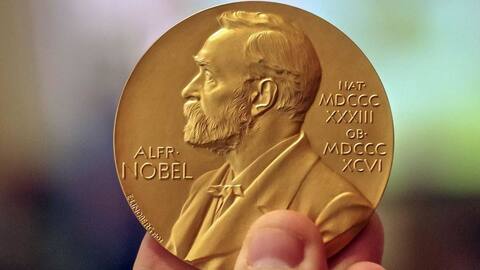Three scientists win Nobel prize for Physics for laser research
What's the story
Three scientists, Arthur Ashkin, Gérard Morou, and Donna Strickland, have been awarded this year's Nobel prize in Physics. The trio was recognized by the Royal Swedish Academy of Sciences in Stockholm for their research in Laser Physics, projects that led to the discovery of unique light-based tools. They will jointly share the 9m Swedish kronor ($997,725) prize. Here are the details.
Twitter Post
The official announcement
BREAKING NEWS⁰The Royal Swedish Academy of Sciences has decided to award the #NobelPrize in Physics 2018 “for groundbreaking inventions in the field of laser physics” with one half to Arthur Ashkin and the other half jointly to Gérard Mourou and Donna Strickland. pic.twitter.com/PK08SnUslK
— The Nobel Prize (@NobelPrize) October 2, 2018
Projects
Here's what the physicists discovered
Ashkin, who hails from the US, will get half of the prize for his work on 'optical tweezers' or the technology that can control tiny organisms with a highly-focused beam of laser. The other half will be shared between Strickland and Mourou, from Canada and France, for their work on a tool that emits high-intensity, ultra-short laser pulses.
Applications
Applications of these technologies
As Ashkin's optical tweezers offer a novel, not to mention reliable, way to hold complex micro-organisms steady, the tech, as scientists believe, could offer numerous benefits in biological research, where microbes and viruses have to be handled. The tech from Mourou and. Strickland, on the other hand, has more real-world applications like in the field of eye surgery or manufacturing.
About
About the winners
Ashkin, 96 at present, worked on optical tweezers between the 1960s and 1980s at Bell Laboratories in New Jersey. Meanwhile, Strickland, 59, and Mourou, 74, worked on their project while working at the University of Rochester in the 80s. It is also worth noting that Strickland is the first woman to win the Nobel Prize in Physics in 55 years.
Do you know?
Who won Nobel prize for Physics last year?
In 2017, Rainer Weiss, Kip Thorne, and Barry Barish were awarded Nobel prize in Physics for the detection of gravitational waves or ripples in the fabric of space-time. The concept was first predicted a century ago by Albert Einstein.
